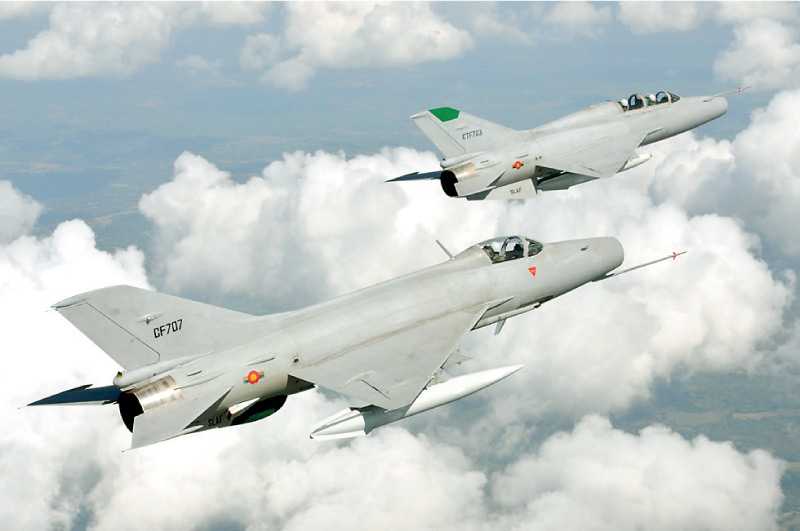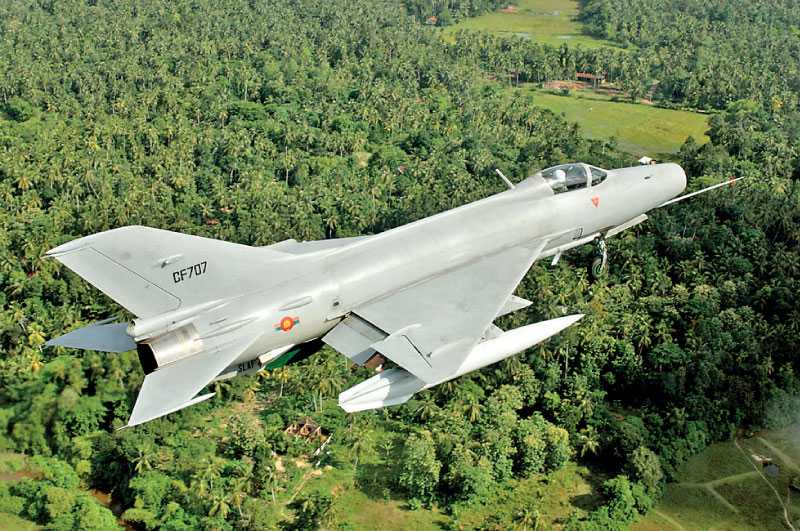Thursday Jan 23, 2025
Thursday Jan 23, 2025
Monday, 1 February 2021 02:22 - - {{hitsCtrl.values.hits}}

F-7 interceptors of No. 5 Squadron continue to be on 24 hours standby to respond to any unwarranted intrusion into Sri Lankan airspace as the formation celebrates its 30th anniversary today
By Asiri Fernando
The home of the Air Force interceptors No. 5 Squadron celebrates their 30th anniversary today.
The squadron stood up in 1991, revived the ‘Jet’ capability of the Sri Lanka Air Force (SLAF) nearly a decade after the Jet Provost trainers of the Royal Ceylon Air Force era and the MIG-17 of the 1970s were retired from service.
At present, the squadron continues to remain on 24 hours readiness with interceptors kept in the quick reaction alert (QRA) readiness to be scrambled at a moment’s notice if any threat is detected within Sri Lankan airspace.
“The squadron has a rostered a crew of well-trained pilots and technical specialist to get the interceptors mission-ready and airborne at a moment’s notice,” the SLAF said, explaining that four F-7GS aircraft acquired in 2007 are equipped with air interception radar and air-to-air missiles to defence the countries airspace from any hostile intruders.
The squadron was formed with a number of F-7BS fighter aircraft, which did not have day and night operations capability and radar in 1991. In the interceptor role, the F-7GS has supersonic performance and is armed with a 30mm cannon and PL-5E air-to-air missiles.
“The role the interceptors are called on to perform requires highly competent and professional pilots and crew. Once airborne, the pilots have to well attuned to the air defence system and will need to make decisions fast and get them right in the first go,” a senior SLAF officer who wished to remain unnamed said.
“We have some of the best pilots in the region. Our pilots receive training in India, Pakistan, Bangladesh, China amongst others and we fuse that experience to mould the best out of the best. The No. 5 squadron is known within the force as the cradle of fighter pilots and that’s because we train all the jet pilots prior to them being assigned to any jet formation,” the SLAF officer explained.
A SLAF fighter pilot receives training for about two to three years and has to log several hundred flying hours before they are selected for a jet squadron, the SLAF said, adding that No. 5 squadron flies 150-200 hours of training sorties to maintain skill competency and practice tactics for a range of missions. The squadron continues training to maintain their air-to-ground and maritime strike capabilities.
According to the SLAF, two FT-5 jet trainers were initially acquired from China in early 1991 with four F-7BS fighters and an FT-7 trainer arriving later the in the year. The jets played an important role during the war in the 1990s and early 2000s providing air support from troops. The F-7BS was primarily equipped with 250lb bombs in the ground support role, the SLAF said.
“The F-7’s arrival enabled us to take an offensive air campaign against the LTTE and support the Army and Navy more effectively with airpower,” Air Marshal Sudarshana Pathirana, one of the founding members of the squadron told Daily FT. Air Marshal Pathirana recalled the capability enhancement the F-7 fleet brought to the order of battle in ground support and air interdiction role to the war effort.
Commenting on the acquisition of the F-7Gs in 2007, Air Marshal Pathirana stated that the Chinese government was very helpful for supplying the jets on a soft loan basis and assisting with training and maintenance of the jets.
